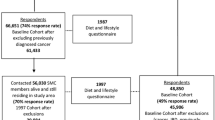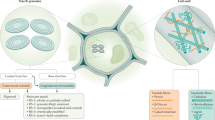Abstract
Most disease can be viewed as a preponderance of causative over protective factors. Rather than viewing a deficiency of plant fibre as a cause of disease it may be better to consider fibre as protective against disease.
Diets rich in fibre are almost invariably low in fat and visa versa. Both components must be given due consideration. Excessive fat intake may contribute to the cause of some diaseas. Evidence suggests that fibre is preventative against a large number of diseases.
By ensuring that stools are soft and bulky, fibre protects against the raised intra-luminal pressures that have been incriminated in the causation of diverticular disease and appendicitis. Prevention of constipation also protects against intra-abdominal pressures generated during efforts to pass small hard stools.
These pressures have been incriminated in the causation of hiatus hernia, varicose veins and haemorrhoids.
By diluting faecal carcinogens and hastening faecal transit and increasing stool acidity protection is afforded against colon cancer.
By reducing absorption of cholesterol and of bile acids and by other mechanisms, fibre appears to confer some protection against the development of gall stones and coronary heart disease.
By reducing the quantity and speed of food ingested and reducing rate of energy absorption, fibre has been postulated to protect against obesity and diabetes.
Zusammenfassung
Den meisten Krankheiten kann grundsätzlich durch protektive Massnahmen begegnet werden. Ehe ein Mangel an Ballaststoffen als Krankheitsgrund erachtet wird, wäre es besser, solche als protektiv gegenüber Krankheiten anzusehen.
Ballaststoffreiche Diäten weisen in der Regel einen geringen Fettgehalt auf- und umgekehrt. Beiden Formen sollte gebürhrende Beachtung geschenkt werden. Übermassige Aufnahme an Fetten kann manche Krankheiten hervorrufen. Sicherlich wirken Ballaststoffe präventiv gegenüber einer grossen Anzahl von Krankheiten.
Bei Sicherstellung von weichem und voluminösem Stuhl ergibt sich, dass Ballaststoffe vor zunehmendem intraluminalen Druck schützen, dem die Verursachung divertikularer Krankheiten und Appendizitis zur Last gelegt wird. Vermeidung von Verstopfungen schützt ebenfalls vor äusserst stark intraabdominalen Drücken, die bei dem Bemühen entstehen, geringen, harten Stuhl passieren zu lassen. Diese Drücke werden ursächlich für Hiatus Hernis, Krampfadern und Hämorrhiden verantwortlich gemacht.
Zum Schutz gegen Darmkrebs ist es erforderlich, fäkale Carcinogene zu verdünnen, die Darmpassage zu beschleuningen sowie den Säuregehalt des Stuhls zu erhöhen.
Es erscheint möglich, dass durch Aufnahme von Ballaststoffen die Bildung von Gallensteinen und Herzkrankheiten eingeschränkt werden kann—durch Reduzierung der Cholesterol-Absorbtion, der Säuren des Gallensaftes oder anderer biochemischer Mechanismen.
Durch Reduzierung der Quantität und der Geschwindigkeit der Nahrungsaufnahme und Einschränkung der Rate der Energie-Absorbtion—auch hier bieten sich Ballaststoffe als Schutz gegenüber Fettsucht und Diabetes an.
Similar content being viewed by others
References
Burkitt, D.P. (1973):B.M.J. 1:274
Burkitt, D.P. (1975a): In: Refined Carbohydrate Foods and Disease. Ed. D.P. Burkitt & H.C. Trowell 87, Academic Press, London.
Burkitt, D.P. (1975b): In: Refined Carbohydrate Foods and Disease. Ed. D.P. Burkitt & H.C. Trowell 161. Academic Press, London.
Burkitt, D.P. (1976):Arch. Surg. Vol. III:1327
Cleave, T.L. (1974): The Saccharine Disease. Keats, Connecticut.
Heaton, K.W. (1973):Nutrition 27:170.
Painter, N.S. (1975): Diverticular Disease of the Colon, Heinemann, London.
Pomare, E.W., & Heatin, K.W. (1973):B.M.J. 4:262.
Southgate, D.A.T. (1976): J. of Human Nutr. 30: 303.
Thomson, W.H.F. (1975):Br. J. Surg. Vol. 62:542.
Trowell, H.C. (1975): In: Refined Carbohydrate Foods and Disease. Ed. D.P. Burkitt & H.C. Trowell, 195, Academic Press, London.
Walker, A.R.P. (1976):Amer. J. Clin. Nutr. 29:1417.
Author information
Authors and Affiliations
Rights and permissions
About this article
Cite this article
Burkitt, D.P. The protective value of plant fibre against many modern western diseases. Plant Food Hum Nutr 29, 39–48 (1979). https://doi.org/10.1007/BF02590265
Issue Date:
DOI: https://doi.org/10.1007/BF02590265




